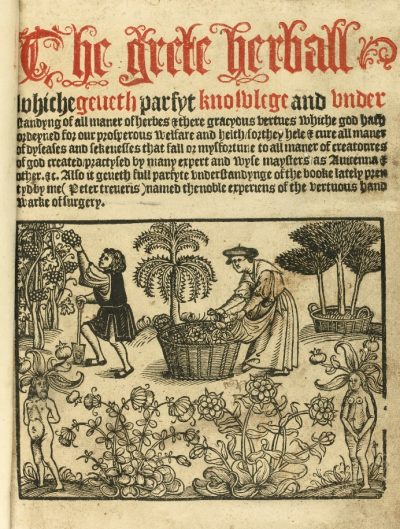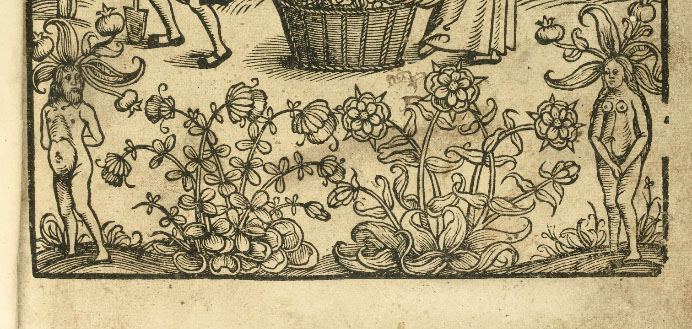The Rose was identifiable to patrons by its signboard hanging outside. Johannes de Witt, a Dutchman who visited London around 1596, left the following description in a manuscript titled Observationes Londiniensis (now lost): ‘There are four amphitheatres in London so beautiful that they are worth a visit, which are given different names from their different signs. In these theatres, a different play is offered to the public every day. The two more excellent of these are situated on the other side of the Thames, towards the South, and they are called the Rose and the Swan from their signboards.’39
For the model, the image of a rose on the sign has been taken from title page of The Grete Herball (1526) (fig. 14), a compendium of herbs and plants and their medicinal properties:

[39] Quoted in E. K. Chambers, The Elizabethan Stage, vol. II (Oxford: Clarendon Press, 1923), 411–14.
[40] Anon., The Grete Herball (Southwark: Peter Treveris, 1526), The Claremont Colleges Library, Claremont, California: Honnold/Mudd Special Collections, QK99 .G7 1526
